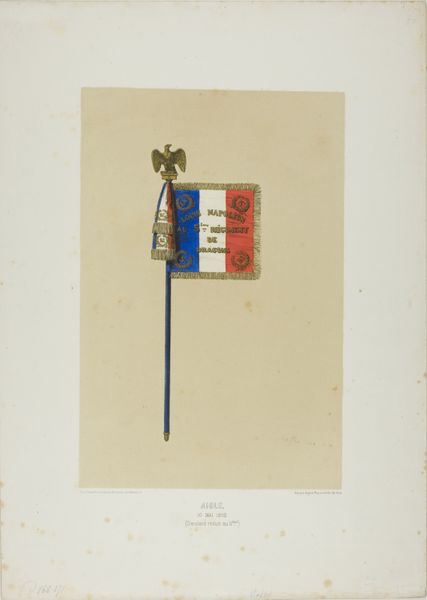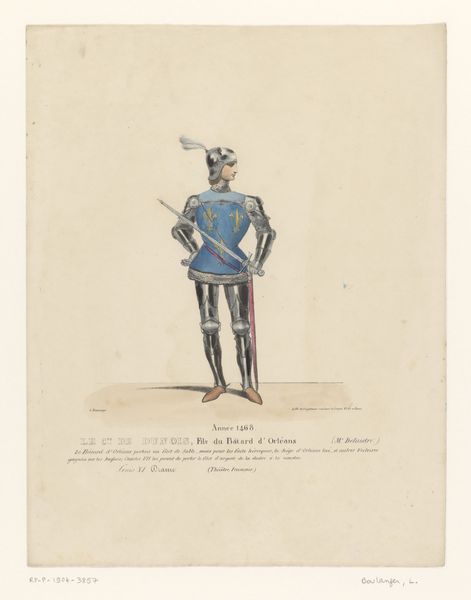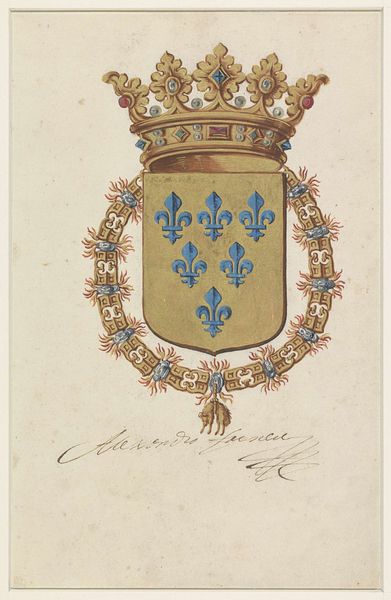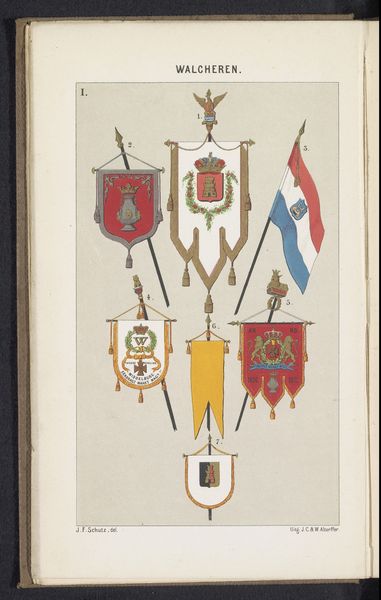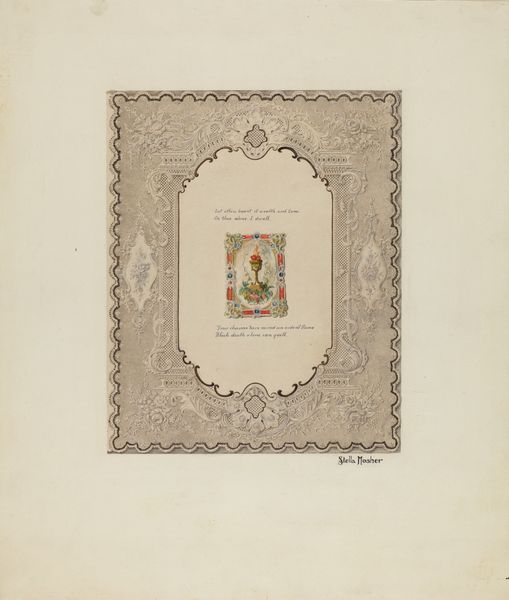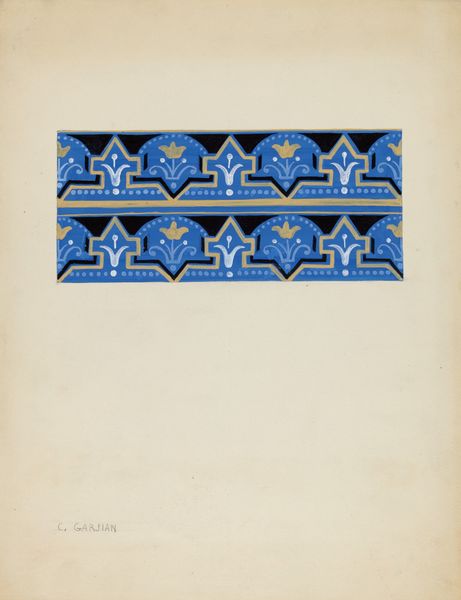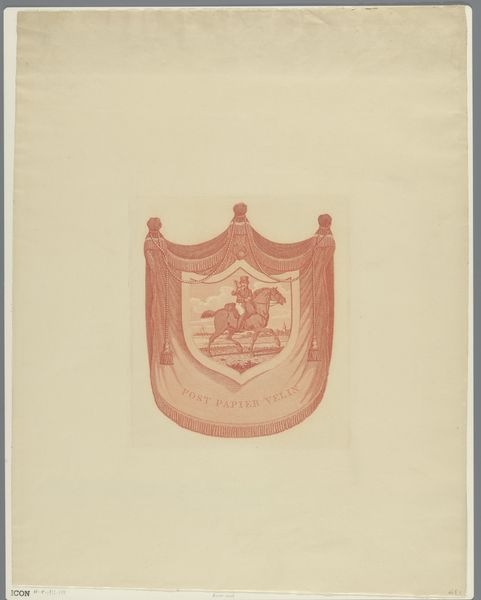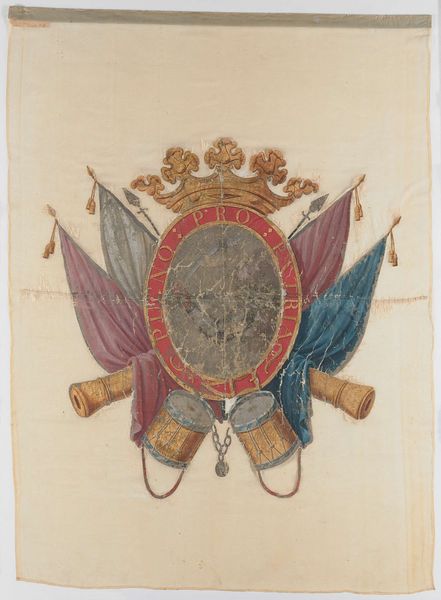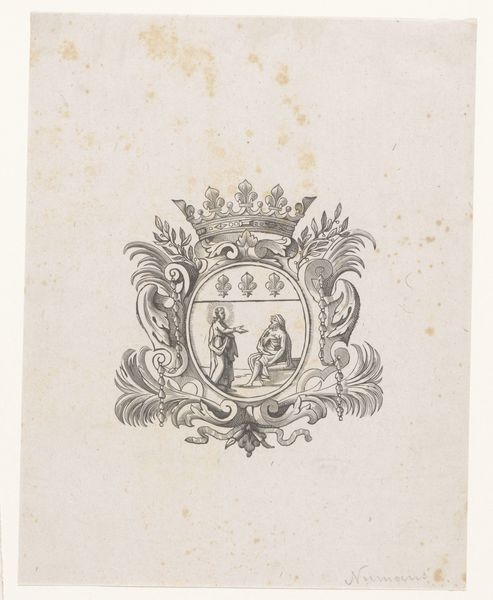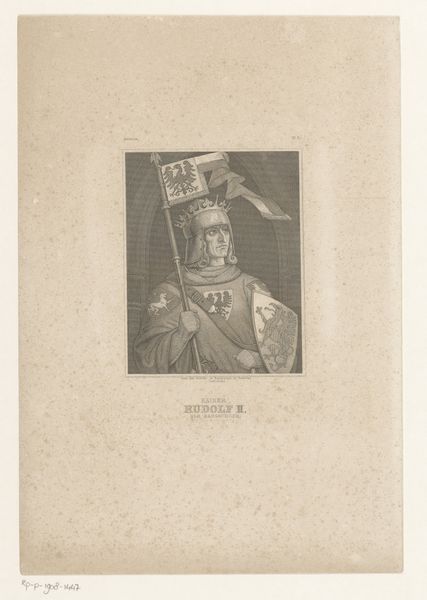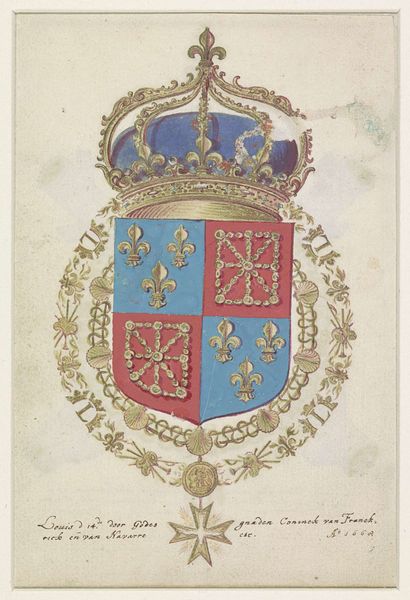
Standard: Louis Napoleon to the 33rd Infantry Line Regiment 10 - 1852
0:00
0:00
Dimensions: 267 × 177 mm (image); 400 × 286 mm (sheet)
Copyright: Public Domain
Curator: Standing before us is Auguste Raffet's "Standard: Louis Napoleon to the 33rd Infantry Line Regiment," created in October 1852. The work employs lithography, gouache, and watercolor on paper. Editor: The initial impression is one of formality and slightly faded glory. The color palette is muted, the crispness of the flag's design contrasts strangely with its aged look, its rigidity promising more violence. Curator: The banner itself offers insight into the social dynamics of its time, serving as propaganda to assert authority. By giving the standard to the 33rd Regiment, Louis-Napoleon wanted to reinforce loyalty from the military ranks and project a connection to the First Empire and a continuity of French glory. How did he plan to capitalize on this message? Editor: Visually, the flag acts as a powerful symbol, linking the leader's image with ideas of military strength and national identity. The symbolism woven into its design serves a psychological purpose, forging emotional connections between people, regime and territory. Note how Louis-Napoleon consciously deploys signifiers reminiscent of Napoleon I’s visual vocabulary, thus equating himself in visual terms with France’s previous ruler. What cultural memory of this connection does Raffet seek to preserve? Curator: It attempts to legitimize his regime by drawing a direct line back to Napoleon, while strategically glossing over inconvenient truths that expose an underlying desire to restore imperial power in a rapidly changing political and social context. How did these visual continuities legitimize oppression? Editor: Quite so. Notice, the symbols – the eagle, the tricolor, the regimental numbers—transcend mere representation. Each possesses layers of historically embedded meaning. The symbolic potency contributes to the construction of a shared cultural narrative that has deep political implications and consequences on questions of citizenship and liberty. Curator: That layering is indeed quite significant, especially given the rise of nationalism in that era. As an artwork deeply rooted in its time, it’s easy to look at the "Standard" today as a manifestation of institutional authority and an insight into a world which reinforces patriarchal militarization. Editor: Raffet's choices reflect, too, an acute understanding of symbols' enduring influence, acting almost like visual spells that retain potency across decades. Examining it through our current moment exposes power structures that continue shaping society today.
Comments
No comments
Be the first to comment and join the conversation on the ultimate creative platform.
